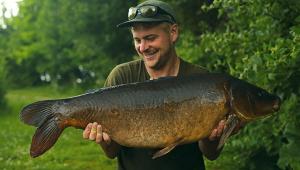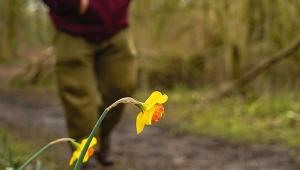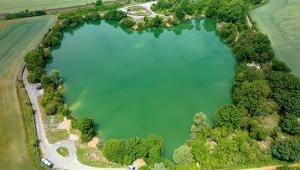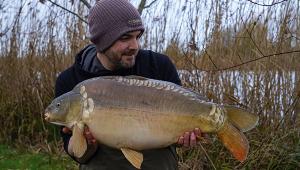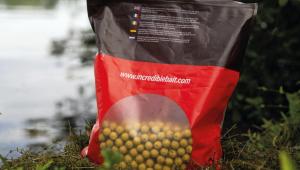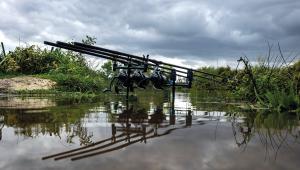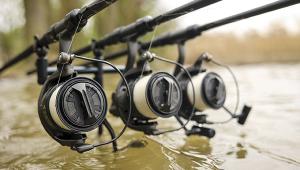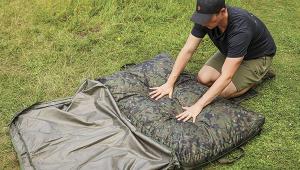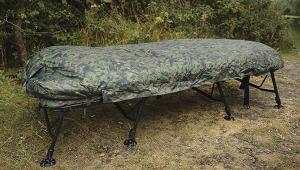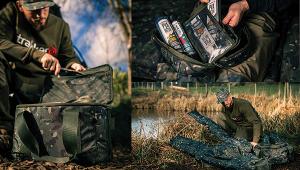The Spring Mind-Set
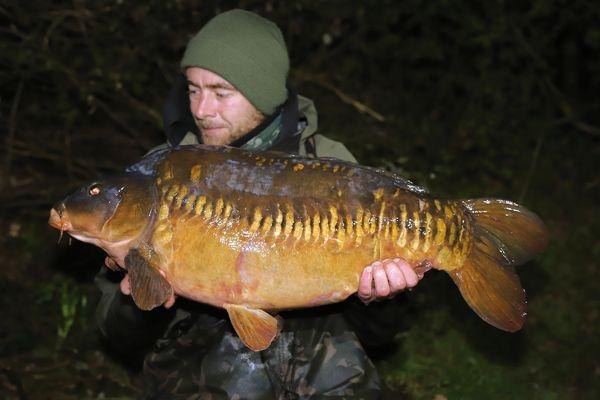
Spring is a season I have always looked forward to, every single year. The fish are often at their biggest weights and having been left alone for the majority of the winter, they also look their best as well! You would be forgiven for thinking that the spring is clubbing season and the fish are well on the feed, which could well be the case if the conditions are spot on, but often it isn’t quite like that. There are a few key things I do that help keep the carp coming and this consistency is the absolute key!
Keeping mobile is obviously important at all times of the year, but on busy lakes in the spring it can be the difference between catching and not. I constantly scan the surface looking for signs of carp or even bird activity. If I see anything, I tend to make a decision very quickly as you never know if someone else is also watching; this applies even more on busy commercial lakes like the ones I tend to target, such as Dinton Pastures. The calibre of angler on the lake is a very high level as you can probably imagine, so you really do need to be on your ‘A’ game to not only catch what are pressured fish, but also beat the others to the opportunities that may arise.
Keep watching for any signs of carp.
If you're not on them, get on them!
A common mistake I see people making in the spring is just because the sun is out one day, doesn’t mean the fish are going to want to feed. Personally, I pay massive attention to the water temperature, to gauge how much bait to put in. There’s plenty of material to back this up, but even by just looking at carp farming, you soon realise how much of a difference the temperature makes to a carp’s feeding habits. Once the lakes get to 14 or 15ºC, it really is game on!
There isn’t a set rule book and as such I always keep on my toes and react to what I can see visually in front of me. Feeding activity on the bottom is normally a very obvious sight; fish head and shouldering out with little splash, followed by bubble trails straight after – you simply cannot ask for more than that! In more choppy conditions these signs are harder to spot, and in such instances I would recommend using a set of binoculars to help you focus in. Obviously, when the water is flat calm and signs are easily seen it makes the job in hand a lot easier but when there may be a strong wind on the lake causing a chop on the water, you really do have to use all your skills to ensure you’ve made the right choices.
There was clearly some hatch going off during my latest visit, but the carp were also feeding on the deck! Decisions, decisions...
In stark contrast to bottom feeding activity, if the surface is filled with seagulls and swallows swooping down and the fish are splashing out all over the place, then they aren’t up for bait. This behaviour is associated with the fish hitting hatches of insects as they rise to the surface to hatch. If this is happening on your lake, then the only method that will catch them is zigs. A huge part of my angling in the spring is searching out the layers, as not only are the carp waking up, so is everything else in nature and don’t the carp know it! Imitating what they are feeding on by suspending a piece of boosted foam in the upper layers is the best way to go for me in this scenario. In more recent times, I’ve even noticed the hatches in the margins as the bugs wash in with the flow.
Spread the rods, keep your options open.
The vast majority of my spring fishing is based around getting a bite at a time, I save stoving in the bait for later in the year. Don’t get me wrong, if I turn up for a three-night session and I am confident the fish will get on the feed and the signs tell me they want it, I will put a few Spombs of bait out. However, with carp being so nomadic at this time of year, you really do have to chase them. This really doesn’t suit the bait-and-wait type of tactic as you don’t want to overcommit to an area, as the pressure may soon see them move off and you’re back to chasing them once again.
For absolute convenience and ease, I use small PVA bags cast to wherever the fish are showing. The way I tie them up is very important, as even though I am using a PVA bag, I don’t want it to look like the classic pile of danger the carp are used to seeing. To help avoid this, I put PVA foam around the hook and bait, as well as several pieces inside the bag itself. Doing this helps the rig settle nicely with a stiff hook link and balanced bait, but it also helps the bait in the bag spread around a bit, as it is held upright off the lead as it starts dissolving. Rather than landing in one lump, forming a neat pile, my bags spread out over maybe a foot circle around the rig, which in my mind is a lot less obvious.
My go-to when casting at the opportunities.
Tying the bag this way also helps to avoid tangles even if I hit the clip a bit too hard. There’s nothing better for a mobile approach in spring when the fish are on the deck. I’ll usually follow this with a few pouchfuls of 12mm Krill or Manilla Active. This keeps the disturbance down to a minimum, but I can sit back knowing a little scattering of potent bait is breaking down in the area, releasing those feeding triggers to hopefully bring a carp over to investigate.
This particular spring has been a tricky one, to say the least. With everyone being mad keen to get back out after the lockdown, everywhere is super-busy and pressured. I have been targeting Black Swan on the Dinton complex this year and it is certainly getting busier by the day. The fish are behaving quite typically as it happens. Nothing much is getting caught over large beds of bait, there have been a lot of zig captures and the majority of the bites off the bottom have come to small baited traps.
A pouch full of small baits like 12mm krill active is perfect for keeping down the disturbance and also applying something for the carp to hone in on.
A real powerhouse of a carp, it certainly got the juices flowing in the cold morning frost!
The last few weeks have also highlighted how important location and being on your toes can be. Something like 85 per cent of all the captures on the lake this year have come from the same 10 per cent of the lake! As more and more anglers have realised this, it’s almost a barrow race to the productive swims at times and that’s on a Monday, let alone a weekend! This could quiet easily change though, and even though the carp do favour this particular zone year on year, there will become a time where they’ll venture out and become far more active in the many acres of water that haven’t got lines in.
It’s worth noting as well, even though the fish are very localised in the lake at the moment, there are still certainly spots that do the bites. As such, I tend to spread the rods around in the swim, rather than putting all my eggs in one basket. This certainly suits the PVA bag and zig methods and making sure I always have a chance while a rod is in the water. Three on a spot certainly doesn’t cut it with this style of angling, you’re being an opportunist to get those bites, then you can build on from your successes after that.
Overall, spring is a great time to be out. It’s far from the old days of what many anglers would class as the carve-up periods, but by angling in the right way and adapting to the situations you can have a great spell of angling before the hot weather moves in and the fishing grinds to a halt for spawning.
Last resort if the carp are nowhere to be found! always on hand if needed to land a carp though when the weed is high.
- Log in or register to post comments

